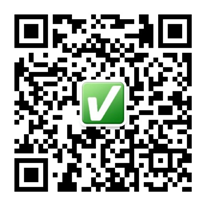Alibaba’s AuotoNavi and U.S.-based tech firm AutoX Shanghai have jointly kicked off a pilot driverless taxi program in Shanghai, a megacity with complex driving conditions, since Monday, marking another milestone in the ride to a destination with autonomous cars as a household item.
Last week, another Chinese tech giant Baidu launched its self-driving taxi services in Changsha, enabling riders to hail a taxi on Baidu Maps and Baidu App. Automaker Geely’s Caocao ride-hailing app aims to test driverless taxis in the second half of this year. Tesla CEO Elon Musk predicted boldly that his company will have over one million robotaxis on the road by the end of this year.
Starting on Monday, consumers in Shanghai can have a free ride by searching “self-driving taxis” on AutoNavi’s Amap app to enter the page for recruiting riders. The applicant who receives approval may experience the driverless tour within the area designated by the Shanghai municipal government. The robot taxi services will be available to the public in Shanghai once the trial is over. It is not clear how long the trial period will be.
Shanghai has been picked as the first city in China for self-driving solution provider AutoX’s venture with AutoNavi (known as “Gaode” in Chinese) mainly because the U.S.-based tech startup was given regulatory permits by the local government. In September 2019, AutoX received a green light for commercial driverless car services from the government of Jiading, a district with a population of more than 1.5 million located in northwestern Shanghai. In December 2019, AutoX obtained the first license in Shanghai to test autonomous cars on the road since the introduction of new self-driving regulations.
In the past three and a half years, AutoX has conducted stress tests of its autonomous driving system in 12 cities in the world, including Shenzhen, Shanghai, Guangzhou, Wuhan, cities in Silicon Valley and Las Vegas and achieved zero-accident track records.
The procedure to get a RoboTaxi is the same as requesting a regular taxi from Amap app: filling in the starting point and the destination and clicking on “AutoX” in the category of “comfy” car model. The driverless taxi will park at a safe place near the starting point, which differs from a regular taxi that picks up the passenger exactly from the starting point.
The RoboTaxi is capable of detecting traffic lights, other cars, pedestrians as well as objects on both sides of the road and designing reasonable routes based on the order. Through cameras and radars installed in the car, surrounding traffic conditions, current car speed, traffic lights and upcoming turns are shown on the dashboard to update the passenger in the real time.
Although RoboX believes that no interference from a person is needed, a safety driver is required for each driverless taxi during the trial in accordance with laws and regulations.
“Taxi-hailing platform and autonomous driving are two priority areas for us and the integration of the two is the trend for transportation in the future,” the person in charge of the joint operation of AutoNavi and AutoX told TMTPost. “The driverless taxi program is able to offer not only supplementary services but also differentiated and fresh travel experience.”
AutoNavi’s Amap app is a one-stop service platform that integrates over 40 ride-hailing platforms for taxis, economic, comfy, business and luxury car services. With the addition of the driverless taxi fleet, one click for a complete set of transportation modes comes true.
In the ride-hailing service sector in China, Didi Chuxing is the operator of China’s largest ride-hailing service platform. A new entrant must capitalize on other portals to acquire and expand its market share by generating new traffic. Amap app, launched by AutoNavi, operates under a business model similar to Taobao Marketplace platform by allowing third-party ride-hailing service providers to run their business on it.
However, for Amap app and third-party ride-hailing service providers, how to achieve synergies is a challenge. Nonetheless, for newcomers and startups like AutoX, Amap app is a good choice with potentials to find a win-win solution.
Many observers argue that the self-driving technology may work in theory, but the real world is a far more dangerous and complex place with unpredictable pedestrians.
Rong Jian, general secretary of the ride-sharing division of China Communications and Transportation Association, predicted unified high-quality driverless car services along with increased safety and efficiency of the self-driving technology. AutoNavi launched the integrated ride-hailing services, marking a major step in China’s shared car services markets. Now with the addition of AutoX driverless taxi services, high technologies are getting closer to ordinary houses.
For customers, Amap app is the combination of navigation software and an app for ride hailing. Users can use the app to get a taxi once the destination is set.
The driverless ride hailing business in China is still in its initial stage as none of players enters the stage of commercialization. Didi Chuxing is expected to launch its own self-driving taxi services in Shanghai soon. The arena has been set and future competition is very likely to be fierce.







 快报
快报
根据《网络安全法》实名制要求,请绑定手机号后发表评论